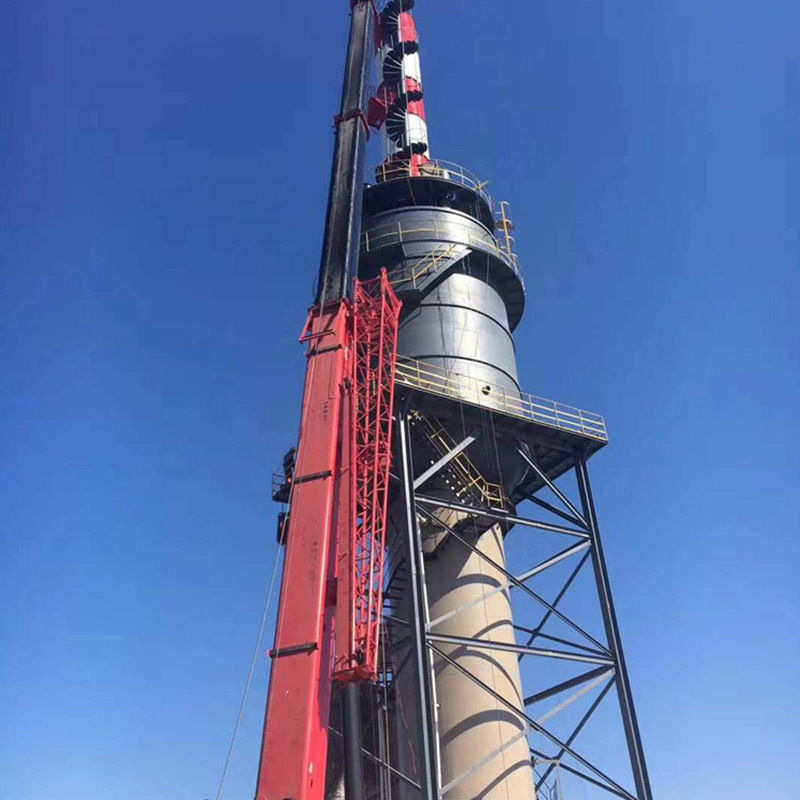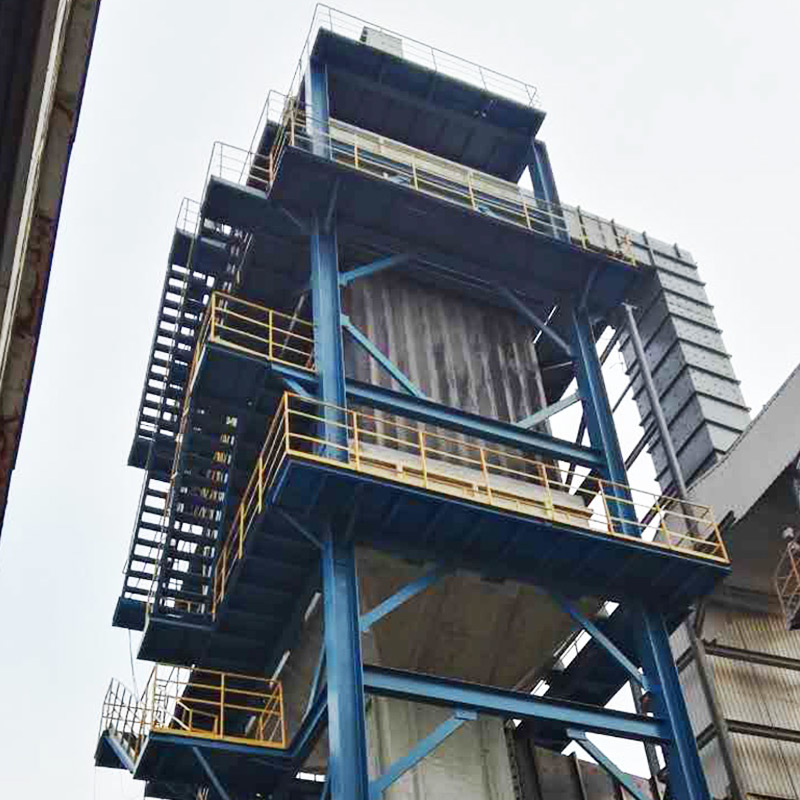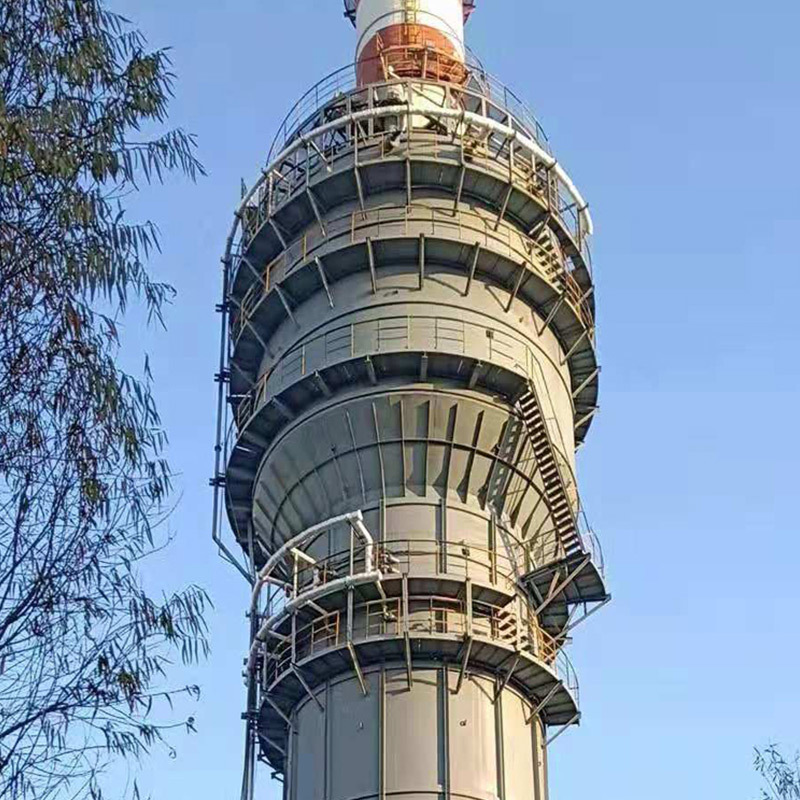
Desulfurizer
- Commodity name: Desulfurizer
- Detailed description
-
Product Introduction
A desulfurization tower is a tower type equipment used for desulfurization treatment of industrial waste gas. Its function is to reduce environmental pollution by absorbing and decomposing sulfides such as sulfur dioxide in flue gas.
Fiberglass desulfurization tower has the advantages of good corrosion resistance, easy processing, rust resistance, no scaling, no blockage, wear resistance, easy operation, management and maintenance, and high operating efficiency.
KELIN specializes in designing and manufacturing fiberglass desulfurization towers, including limestone slurry method, double alkali method, magnesium oxide method, ammonia method and other desulfurization processes, which meet the emission standards of sulfur content of 10mg/m³ and dust content of 5mg/m³ or less. The spray layer can choose 3-5 layers, with a temperature resistance of 150 ° C. The defogger can choose structures such as swirl plate, flat plate, tube bundle, etc. The flue gas flow rate is not recommended to exceed 2m/s. Both in tower and out of tower circulation, flue gas distributor, flue gas guide ring, side stirring, clean water spray layer, oxidized air pipe, etc. can be selected. Please provide detailed flue gas parameters and emission standards, FYGRP, Provide you with detailed design scheme and construction requirements to meet environmental protection requirements. Please provide local natural condition data and process data, including wind speed, earthquake level, rain and snow conditions, maximum temperature and minimum temperature, etc. Through reasonable design, the thickness of 5mm thick wear-resistant layer reinforcement layer inside the desulfurization tower is designed according to the actual situation, and the external surface is painted with anti-aging gel coat resin to ensure that it will not change color in ten years. Please provide the sulfur content, exhaust gas treatment capacity, dust content, emission temperature, and required environmental emission standards of the flue gas. KELIN's engineers will provide the most reasonable construction plan and provide a turnkey project.
Limestone / Gypsum Desulfurization Method
Working Principle
This method uses limestone or lime prepared slurry to absorb SO2 from flue gas, which is divided into two stages: absorption and oxidation. The flue gas from the boiler or kiln enters the absorption tower under the action of the induced draft fan after dust removal. The absorption tower is a countercurrent spray empty tower structure, integrating absorption and oxidation functions. The upper part is the absorption zone and the lower part is the oxidation zone. The flue gas after dust removal comes into reverse contact with the circulating slurry in the absorption tower. After absorbing SO2, the slurry generates calcium sulfite and then enters the circulating oxidation zone. In the circulating oxidation zone, calcium sulfite is oxidized into gypsum crystals by the air blown in. At the same time, fresh limestone slurry is supplied from the absorbent preparation system to the absorption oxidation system to supplement the consumed limestone and maintain a certain pH value of the absorption slurry. When the reaction product slurry reaches a certain density, it is discharged into the desulfurization by-product system and dehydrated to form gypsum. The process mainly consists of units such as SO2 absorption, lime dissolution, neutralization oxidation, gypsum crystallization, separation, etc. The most important link in the entire process is SO2 absorption.
Technical Advantages
1. The desulfurization efficiency is over 95%.
2. The technology is widely applied, mature, and highly reliable.
3. Coal has a wide range of adaptability and can be used for flue gas desulfurization with high concentration SO2 content in large capacity units.
4. Absorbent limestone is cheap and easy to obtain, and can produce by-product gypsum, with significant economic benefits.Double Alkali Desulfurization Method
Working Principle
Double alkali desulfurization refers to a desulfurization method that uses two alkaline substances, NaOH and lime, as desulfurizers. The main desulfurizer consumed is lime. This process has the advantages of low operating costs and low investment. The principle of this process is that the circulating pump transports sodium alkali to the desulfurization tower, and the desulfurization slurry reacts with the flue gas inside the desulfurization tower. The purified flue gas is discharged through the outlet to the chimney. After the reaction, the desulfurization waste liquid enters the reaction regeneration tank through the bottom return ditch of the desulfurization tower and reacts with the added lime slurry. The replaced sodium hydroxide, sodium sulfite, calcium sulfate, calcium carbonate, etc. enter the sedimentation tank together. The upper layer of sodium alkali solution overflows to the circulation pool for recycling, and the insoluble calcium salts deposit at the bottom of the sedimentation tank and are transported to the slag treatment system for treatment by the slurry pump.
Technical Advantages
1. The desulfurization efficiency is over 95%, and the operational reliability is high.
2. Simple, compact, and specialized system design with a small footprint.
3. The optimal tower size minimizes capital investment and operating costs, making it suitable for flue gas desulfurization of any coal with sulfur content.
4. Special nozzle design, better absorption effect, abundant lime resources as absorbent, cheap and easy to obtain, desulfurization by-product gypsum is convenient for comprehensive utilization, and the economic effect is significant.
5. The absorption tower liquid redistribution device effectively avoids the occurrence of flue gas wall climbing, improves economy, and reduces energy consumption. The slurry pool separation technology is beneficial for gypsum crystallization and sulfur dioxide absorption.
key word:
Get a quote









